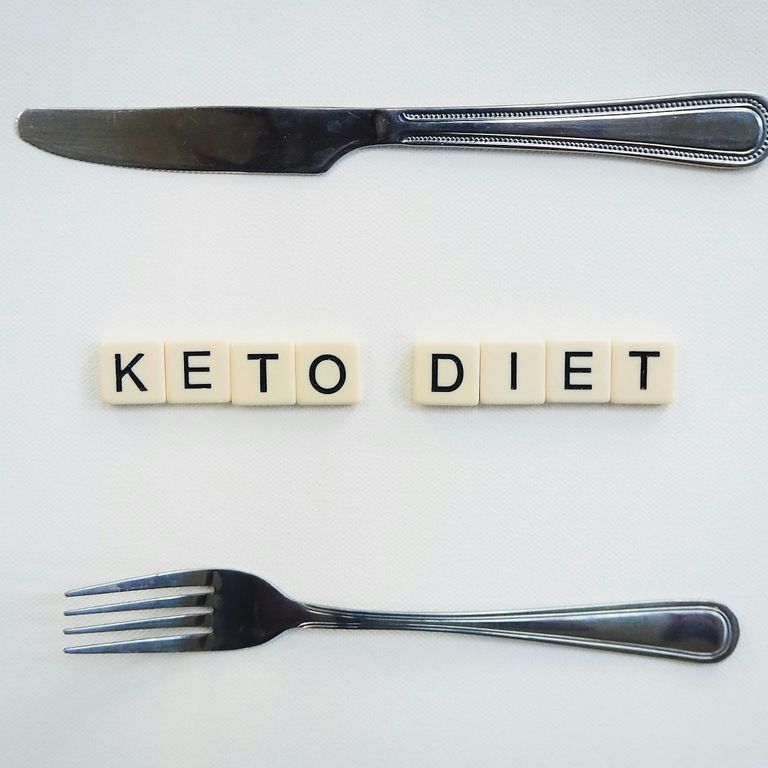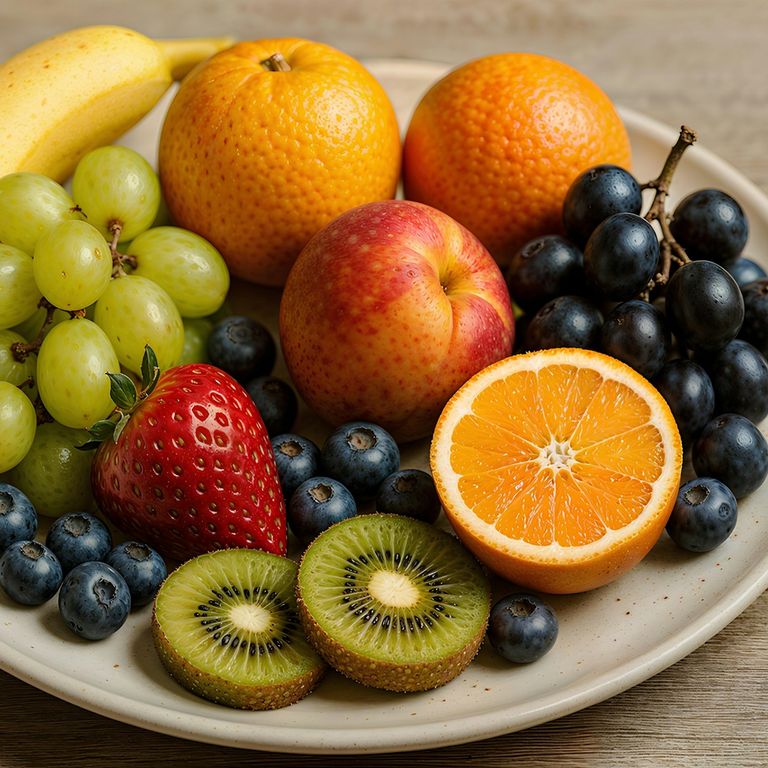Diet quality in U.S. adults eating in senior and community centers: NHANES 2009-2018
Community & senior centers support older adults during aging. They offer a wide variety of services, including meal programs. Whether obtaining meals from these programs improves nutrient intake in older adults remains unknown. We used data from a large epidemiological US study (the National Health and Nutrition Examination Surveys) to investigate whether meal program participation was associated with an improved nutrient intake. Eating at community centers was associated with an improved nutrient intake in older men. On the contrary, eating at community centers was not associated with an improved mineral and vitamin intake in older women. Our study highlights the pivotal role of community/senior centers from a public health perspective.

#1
Nutrient intake in low-carbohydrate diets in comparison to the 2020-2025 Dietary Guidelines for Americans: a cross-sectional study
A low-carbohydrate diet restricts carbohydrate intake, focusing instead on protein and fat. This means limiting foods high in carbohydrates like pasta, bread, and starchy vegetables. The percentage of US adults following low-carbohydrate diets doubled in the last decade. Some researchers observed this trend with concern due to the poor overall diet quality of low-carbohydrate diets. We used data from a large epidemiological US study (the National Health and Nutrition Examination Surveys) to analyze nutrient intake data from individuals on a low-carbohydrate diet. Individuals reporting low-carbohydrate diets exceeded the recommendations for potentially harmful nutrients (saturated fat and sodium intake). These individuals also had an insufficient intake of health-promoting nutrients (fiber, magnesium, potassium and several vitamins). Our study emphasizes that low-carbohydrate diets may fall short in essential nutrients.

#2
Citrate-based dietary alkali supplements available in Germany: an overview
Fruits and vegetables are abundant in health-promoting alkali precursors (citrate, malate) and help to effectively reduce the Potential Renal Acid Load (PRAL) from diet. The PRAL is a measure of the acid that the body produces after ingesting a specific food. Oral alkali supplements are supposed to reduce the PRAL. There are numerous alkali supplements availble on the market, however, their benefits and drawbacks have rarely been analyzed in a larger scientific context. We performed an objective and unfunded comparative analysis of the available dietary alkali supplements in Germany. Ingredients, PRAL-lowering effects as well as costs were compared for 16 supplements. This article helps individuals who are interested in alkali supplements to make an informed decision to select the most suitable supplement for a particular situation.

#3
Supplementation Behavior and Expenditures in Healthy German Vegans, Lacto-Ovo-Vegetarians and Omnivores: A Cross-Sectional Study
Dietary supplements may help to ensure an adequate intake of nutrients of concern in all diets. Nutrients of concern are nutrients for which the recommended intake may not be covered by a respective diet alone. Nutrients of concern in plant-based diets include vitamin B12 and omega-3 fatty acids. Studies on supplementation behavior and expenditures in vegetarians and vegans are scarce. Detailed supplementation data from n = 115 adults from a German study over one year was analyzed in detail. Vegans took more supplements (median: n = 2.5) than omnivores (n = 1) and lacto-ovo-vegetarians n = 2.5. Yearly supplementation costs in those reporting supplements ranged from 0.66€ to 1566.50€. Approximately 40% of participants spent more than 50 Euros per year on supplements. Our study shows that supplements are widely used in many vegetarians and vegans, with substantial differences in expenditures. Our data suggest a risk for over-supplementation and an unnecessary intake of supplements in many individuals, which is not warranted from a nutrition perspective. As unnecessary supplementation is not without risks, an experienced healthcare professional or dietician should be asked when in doubt.

#4
Status of animal experimentation in nutrition and dietetic research: Policies of 100 leading journals and new approach methodologies
Research involving animals is widespread in the biomedical fields. The role of animal research has often been questioned and criticized. It is often argued that research findings from studies with animals may not be transferred to humans. Animal studies are often criticized for being unethical and unnecessarily brutal. Despite attracting criticism, research involving animal experiments is still regularly published in scientific journals. We reviewed 100 leading scientific journals from an established database in the nutrition and dietetics category for the year 2022. Our aim was to explore the policies of these scientific journals towards animal research. Only 9.6% (n = 8) of journals stated that they would not publish animal-based studies; 4.8% (n = 4) considered animal studies with qualifications, whereas the remaining 85.5% (n = 71) published animal studies without qualification. Some journals claimed not to publish studies involving animals but did so nevertheless. Put into a larger context, our study reveals that animal studies are widespread and widely accepted in nutrition and dietetics. The review accompanying this article discusses alternatives to animal research in great detail and summarizes important resources for those interested in non-animal research.

#5
Current Sex Distribution of Cooking and Food Shopping Responsibilities in the United States: A Cross-Sectional Study
Home cooking confers benefits for diet and health. Although cooking may be a joyful act of mindfulness, it also requires planning, preparation and time. Historically, women have been more likely to fulfill the role of food shopping and cooking. More recent studies, however, suggested a larger involvement of men in home cooking. In this study, we examined the current sex distribution of cooking and food shopping responsibilities in the United States of America based on a nationally representative sample between 2017-2020. More than 80% of women aged 25 years or older indicated that they were the person who did most of the planning/preparing of meals in their families. The percentage of males responding affirmatively was substantially lower, ranging from 38.73% to 43.20%. Our study suggested that the majority of food shopping and cooking duties are still performed by women, which has important implications for public health nutrition and public health strategies that aim to improve the diet quality of men.

#6
Nutrition Coverage in Medical Licensing Examinations in Germany: An Analysis of Six Nationwide Exams
Nutrition education in medicine is poor, with nutrition-related topics being barely integrated into lectures. Most medical students receive only a few contact hours of nutrition instruction during their entire time at medical school. Identifying barriers that may explain the lack of nutritional knowledge in medical students is thus of paramount importance. We addressed this issue and assessed the nutrition content, as well as students' scores, in the second part of Germany's nationwide medical licensing exam. Six nationwide medical licensing examinations (2018-2020) undertaken by 29,849 medical students were analyzed. We screened 1920 multiple-choice questions for nutrition-related content. Nutrition-related questions accounted for a minority of the questions (2.1%, n = 40/1920). A considerable number of the questions (n = 19) included only a single nutrition-related answer option that was frequently incorrect and served as a distractor. About 0.5% of questions were entirely nutrition related. We conclude that nutrition-related content plays only a minor role in the Germany’s nationwide medical licensing examinations. The inclusion of additional nutrition-related examination questions could serve as an incentive to engage students and medical schools in enhancing medical nutrition education.

#7
Adherence to a Vegetarian Diet is not Associated With Depression: Results From the National Health and Nutrition Examination Surveys
Vegetarian diets have been reviewed favorably with regard to physical health benefits. Vegetarian mental health is less well documented. In this study, we explored whether following a vegetarian diet was associated with depression in a nationally representative sample of US adults. Depression was assessed using a questionnaire (Patient Health Questionnaire-9). Vegetarian status was self-reported. The link between both variables was evaluated with mathematical models (regression), which also consider factors such as age, sex and income. The results suggested no link between vegetarianism and depression. Since data was drawn from a single time point, we cannot make causal statements. In a larger context, the present study suggests that a vegetarian diet does not affect mental health negatively.

#8
Nutrient Intakes in Prostate Cancer Survivors in the United States: A Nationally Representative Study
There are currently more than 3.3 million prostate cancer survivors in the United States. Studies have shown that a good diet quality may lower the probability of prostate cancer progression. Assessing the diet quality of PC survivors is thus of paramount importance from a public health nutrition perspective. Here, we systematically estimated dietary intake data from 360 prostate cancer survivors aged 70.70 years on average, and contrasted the results to the recommendations found in the 2020-2025 Dietary Guidelines for Americans. Diet quality in PC survivors was found to be generally poor. Daily nutritional goals for many nutrients were not met. Our results reiterate the need for nutritional assessments and counseling in prostate cancer patients. In a larger context, we argue that nutrition should receive more attention in the treatment of cancer patients.

#9
Special Diets and Nutrient Intakes in Morbidly Obese US Adults in Comparison to the 2020-2025 Dietary Guidelines for Americans
Morbid obesity is defined by a body mass index > 40 kg/m². Morbid obesity is the most severe form of obesity. The risk of suffering from any chronic medical condition is almost twice as high in individuals with morbid obesity as compared to individuals with overweight. Nutrient intake data studies in adults with morbid obesity are often based on individuals seeking weight loss surgery rather than focusing on the general community. In this study, we estimated nutrient intake data in 1,708 US adults from the general population with morbid obesity. Morbid obesity was more common in females than in males (65.60% vs 34.40%). The majority of adults with morbid obesity failed to meet the nutrient intake recommendations found in the US national dietary guidelines. Nutrients found in plant foods (potassium, fiber, magnesium) were not consumed in sufficient amounts. Morbidly obese individuals frequently reported special diets, with up to 28% of the examined population disclosing at least one special diet.

#10
Does Self-Perceived Diet Quality Align with Nutrient Intake? A Cross-Sectional Study Using the Food Nutrient Index and Diet Quality Score
Assessing diet quality is critical to help individuals improve their dietary choices. In nutrition and dietetics, controversies persist as to whether self-perceived diet quality is a reliable and a good marker for the actual measured diet quality. In this study, we used data from a large US-based population study (the National Health and Nutrition Examination Surveys) to test whether self-perceived diet quality aligned with actual diet quality. Diet quality was measured using two validated scores: the Food Nutrient Index (FNI) and Diet Quality Score (DQS). Our findings suggested that higher self-perceived diet quality was associated with a better measured diet quality. We suggest that self-perceived diet quality may help as a “first screener” in nutrition and dietetic counseling. Self-perceived diet quality is an underexplored indicator that deserves more attention – despite its intrinsic limitations.

#11
Nutrition facts labels: who is actually reading them and does it help in meeting intake recommendations for nutrients of public health concern?
Fiber, potassium and calcium are essential nutrients that are important for human health. In the US, many people do not meet the intake recommendations for these nutrients. As such, these nutrients are considered nutrients of public health concern. In this study, we investigated whether the usage of nutrition facts labels on food products was associated with an improved intake of these nutrients. Data from a US-based study including 5,416 individuals was analyzed. Nutrition facts panel reading was associated with fiber intake. Individuals who regularly read nutrition fact labels were two times more likely to meet the national fiber intake recommendations. These findings have potential implications for public health nutrition strategies that may center around educational work and food labeling.

#12
The potential renal acid load of plant-based meat alternatives
Plant-based meat alternatives (PBMAs) are food products derived from plants. They are designed to mimic the preparation methods, nutritional profile, and sensorial qualities of meat. PBMAs are currently subject to a controversial debate centering around their health value. Here, we reviewed PBMAs from an acid-base perspective. The Potential Renal Acid Load (PRAL), which is a measure of the acid that the body produces after ingesting a food, was calculated for 37 PBMAs. The higher the PRAL, the more acid is produced after ingestion on the examined food. PRAL values varied substantially across the examined PBMAs, and differences were as large as 19.73 mEq per 100 g of PBMA. Mycoprotein- and wheat-based PBMAs were more acidic than conventional meats. The majority of items, however, had a lower PRAL than their meat-based counterparts. Our findings reiterate that not all PBMAs are created equal, and suggest that PBMAs are generally not suitable to substantially alkalize an individual's diet.

#13
Potential renal acid load of non-dairy plant-based milk alternatives
Plant-based milk alternatives are food products derived from plants. They are designed to mimic the preparation methods, nutritional profile, and sensorial qualities of cow’s milk. The market for plant-based milk alternatives has been growing continuously within the last years, and numerous new food items including almond, oat, and soy milk are nowadays commercially available. Here, we investigated the Potential Renal Acid Load (PRAL) of milk alternatives, which is a measure of the acid that the body produces after ingesting a food. The higher the PRAL, the more acid is produced after ingestion on the examined food. For this cross-sectional study, we used manufacturer-derived data and compared the PRAL values of different plant-based milks with cow’s milk. The median PRAL score for all plant-based milk alternatives was −0.23 (2.14) mEq/100 ml, and indicated a slightly alkalizing potential. Soy milks yielded, on average, the lowest PRAL score (−1.11 ± 1.14 mEq/100 ml), whereas mixed milks were slightly acidifying (mean PRAL score: 0.19 ± 0.39 mEq/100 ml). When compared to the PRAL value of cow’s milk, plant-based milk alternatives were slightly more alkaline. In a larger context, our study helps to better characterize plant-based milk alternatives and adds PRAL values for a new food group.

#14
How Well Do Low-PRAL Diets Fare in Comparison to the 2020–2025 Dietary Guidelines for Americans?
The Potential Renal Acid Load (PRAL) is a measure of the acid that the body produces after ingesting a food. A high PRAL is detrimental to human health. Therefore, alkalizing diets characterized by a negative PRAL (also called low-PRAL diets) enjoy uninterrupted popularity. The nutritional adequacy (e.g., whether nutrient intake recommendations are met) of said diets has rarely been assessed in large populations. We used data from a large US-based population survey, and estimated nutrient intakes in individuals consuming a low-PRAL diet and contrasted the results in an age- and sex-specific way to individuals on an acidifying (high PRAL) diet. Nutrient intakes in both groups were also compared to the current Dietary Guidelines for Americans. Individuals on an alkaline diet numerically met more nutritional goals than individuals on an acidifying diet, yet both failed to meet the intake recommendations for vitamin D and calcium. Individuals on a low-PRAL diet should pay special attention to vitamin B12, fiber and other nutrients as specified in the full article. A low-PRAL diet is not automatically healthy; special attention has to be paid to maximize the intake of fruits and vegetables.

#15
A trend analysis of home-delivered meal programs in the US
Home-delivered meals improve diet quality and increase independence in homebound individuals. For this analysis, we used data from a large US-based study (National Health and Nutrition Examination Surveys). We analyzed reports from 23,000 individuals (2009-2023) and reviewed the commonness of home-delivered meals from community programs, "Meals on Wheels", and other government programs in older US adults aged ≥60 years. Up to 4% of the older US population reported home-delivered meals in 2021-2023; this constitutes a twofold increase compared to 2009/2010. Home-delivered meal recipients were more likely to live alone and in poverty. Vision problems and difficulties doing errands alone emerged as the leading causes of disability associated with home-delivered meals. Increasing age and decreasing household size were also significant predictors. Given the rapidly aging population and the desirable cost-benefit ratio of home-delivered meals, policymakers and public health strategies may consider expanding such programs.

#16
Whole Blood Count Data and Hematological Parameters in US Vegetarians: A Cross-Sectional Study
Whole blood count composition in vegetarians was found to differ from omnivores. Vegetarians were reported to have lower white and red blood cell counts. White blood cells are important for the immune system. High white blood cell counts may also indicate inflammation in the body. In this study, we compared whole blood count composition between vegetarians, semi-vegetarians (also called flexitarians), and omnivores based on data from 8,323 US adults. Results confirmed lower white blood cells in vegetarians but the difference to omnivores was not significant. A higher BMI and higher selenium intakes were associated with higher white blood cell counts in vegetarians. This study also suggested a role for dietary vitamin B12, as a higher B12 intake was also associated with higher white blood cell levels. While hemogram alterations were directionally consistent with previous studies, differences in white blood cells were not significant between vegetarians and omnivores in this study. We suggest that the relatively high BMI in vegetarians in the examined study population could play a pivotal role in this context and highlight the importance of weight control even in vegetarian populations.
